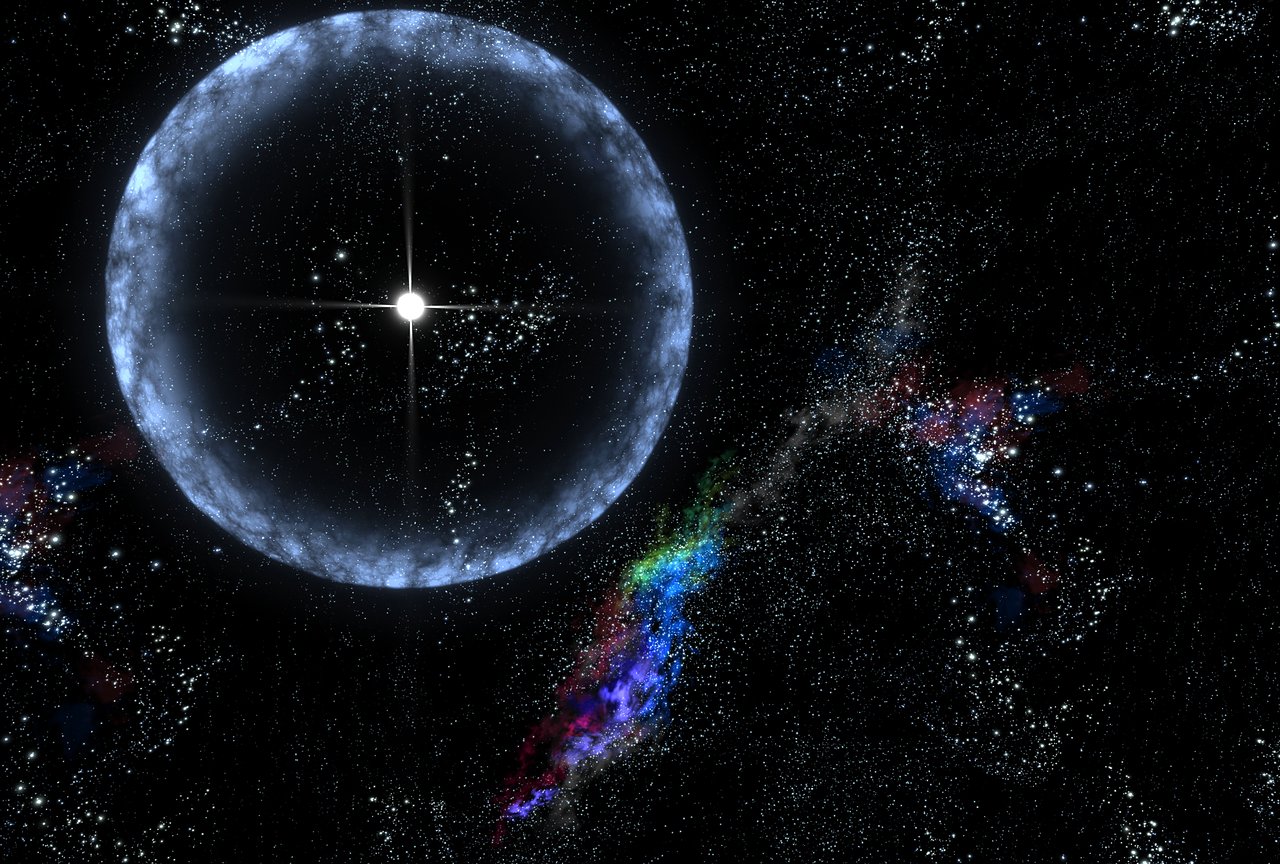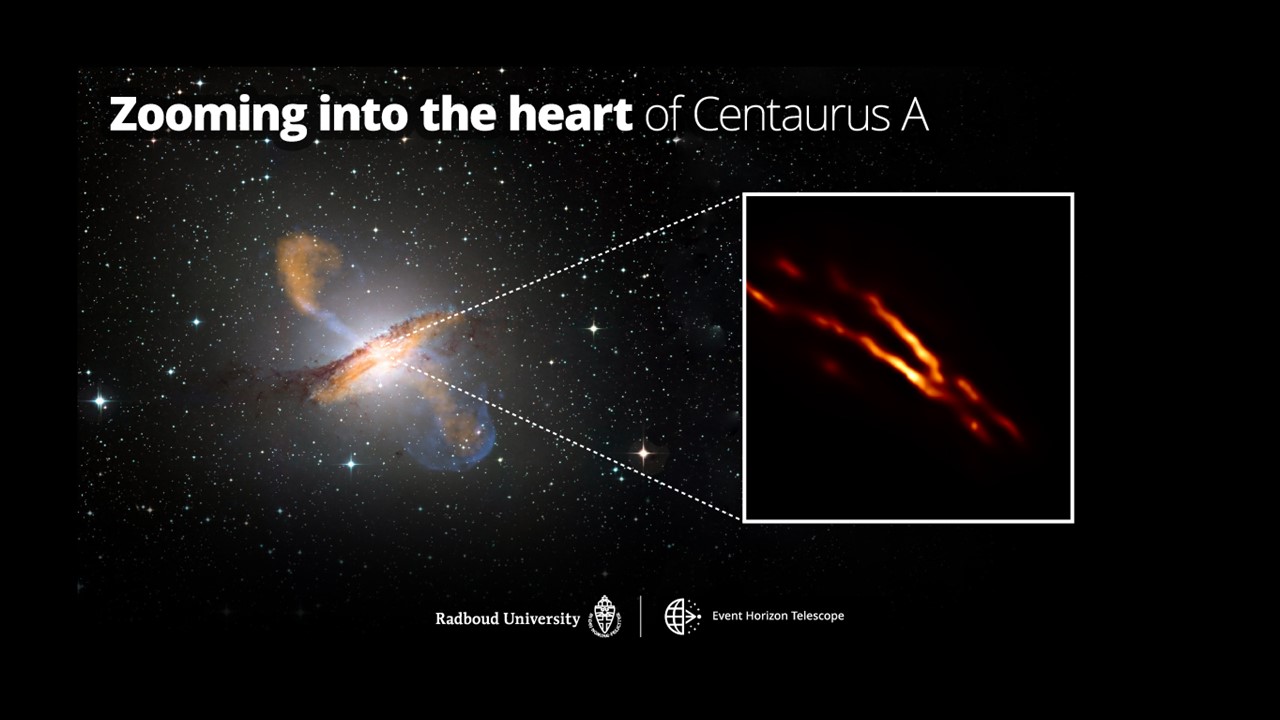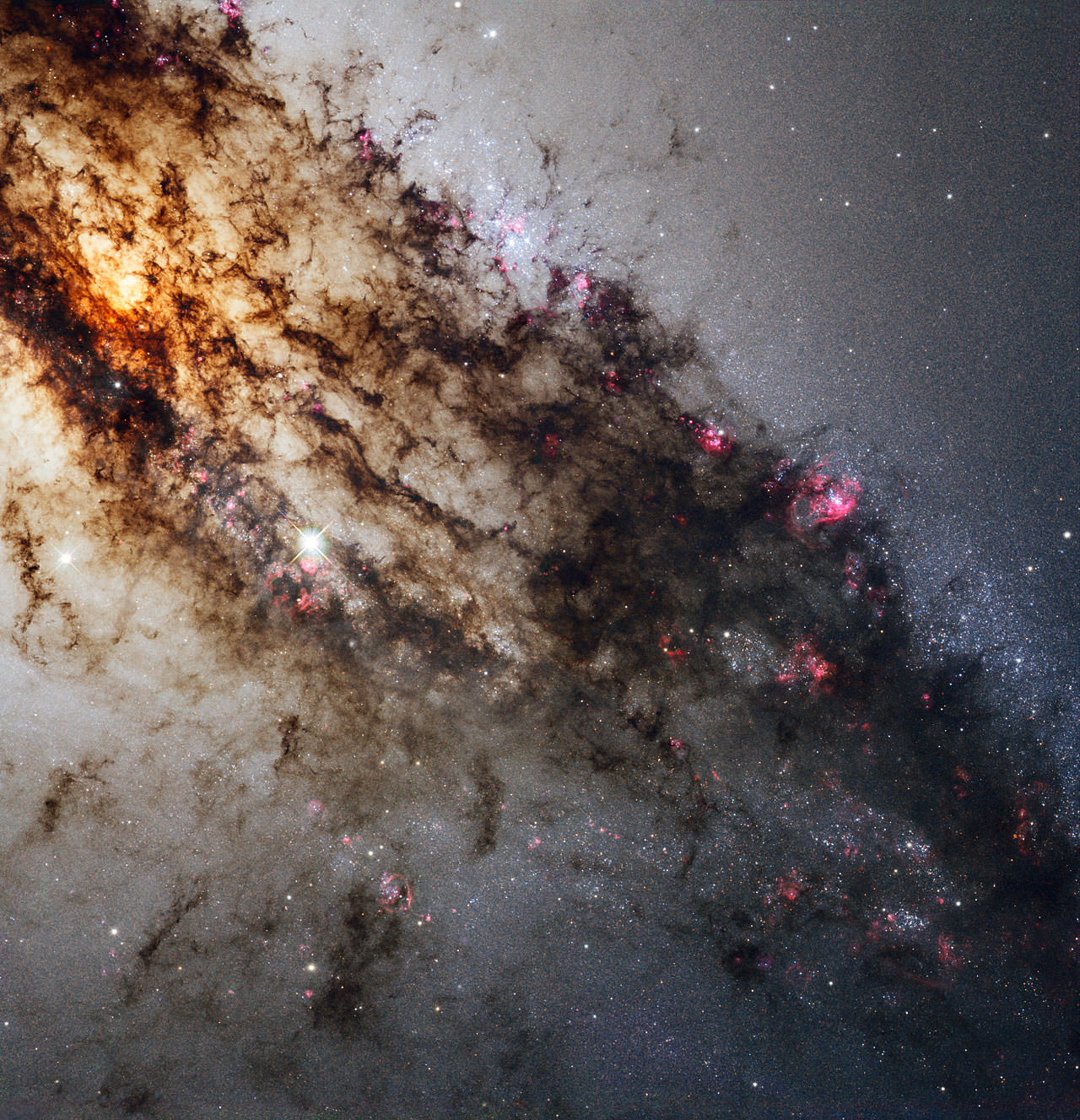Most galaxies are thought to play host to black holes. At the center of Centaurus A, a galaxy 12 million light years away, a jet is being fired out into space. Images that have been captured by NASA’s Chandra X-ray observatory show that the high energy particles have struck a nearby object creating a shockwave. The target is thought to be a giant star, maybe even a binary system, where the collision and turbulence has increased density in the region.
Continue reading “Zap! A Black Hole Scores a Direct Hit With its Jet”Astronomers Find the Longest Black Hole Jets Ever Seen
Black holes often appear in science fiction movies, largely because elements of their existence are still a mystery. They have fascinating impacts on the surrounding region of space too with distortions in space and time high on the list. A team of astronomers have found a supermassive black hole with twin jets blasting out an incredible 23 million light years, the longest yet. To put this into context, if you lined up 140 Milky Way galaxies side by side, then that’s the length of the jet!
Continue reading “Astronomers Find the Longest Black Hole Jets Ever Seen”Hubble saw Multiple Light Echoes Reflecting off Rings of Dust From a Supernova Explosion
When stars reach the end of their life cycle, they experience gravitational collapse at their centers and explode in a fiery burst (a supernova). This causes them to shed their outer layers and sends an intense burst of light and high-energy short-wavelength radiation (like X-rays and gamma-rays) out in all directions. This process also creates cosmic rays, which consist of protons and atomic nuclei that are accelerated to close to the speed of light. And on rare occasions, supernovae can also create “light echoes,” rings of light that spread out from the site of the original explosion.
These echoes will appear months to years after the supernova occurs as light from the explosion interacts with the layers of dust in the vicinity. Using the Hubble Space Telescope (HST), an international team of astronomers was able to document the emergence and evolution of multiple light echoes (LEs). The team traced these echoes to a stripped-envelope supernova (SN 2016adj) located in the central dust lane of Centaurus A, a galaxy located 10 to 16 million light-years away in the constellation of Centaurus.
Continue reading “Hubble saw Multiple Light Echoes Reflecting off Rings of Dust From a Supernova Explosion”If you had Radio Telescopes for Eyes, one of the Biggest Things in the sky Would be a jet of Material Blasting out of a Nearby Galaxy

One concept that’s difficult to visualize is the apparent size of objects in the sky. No the actual size of an object, but rather the amount of area an object covers in the sky. Apparent size depends on an object’s actual size and its distance from us. For example, the Sun is about 400 times wider than the Moon, but also about 400 times more distant, so the Sun and Moon have roughly the same apparent size.
Continue reading “If you had Radio Telescopes for Eyes, one of the Biggest Things in the sky Would be a jet of Material Blasting out of a Nearby Galaxy”The Event Horizon Telescope Zooms in on Another Supermassive Black Hole
On April 10th, 2019, the world was treated to the first image of a black hole, courtesy of the Event Horizon Telescope (EHT). Specifically, the image was of the Supermassive Black Hole (SMBH) at the center of the supergiant elliptical galaxy known as M87 (aka. Virgo A). These powerful forces of nature are found at the centers of most massive galaxies, which include the Milky Way (where the SMBH known as Sagittarius A* is located).
Using a technique known as Very-Long-Baseline Interferometry (VLBI), this image signaled the birth of a new era for astronomers, where they can finally conduct detailed studies of these powerful forces of nature. Thanks to research performed by the EHT Collaboration team during a six-hour observation period in 2017, astronomers are now being treated to images of the core region of Centaurus A and the radio jet emanating from it.
Continue reading “The Event Horizon Telescope Zooms in on Another Supermassive Black Hole”Quasars are the Biggest Particle Accelerators in the Universe

We puny humans think we can accelerate particles? Look how proud we are of the Large Hadron Collider. But any particle accelerator we build will pale in comparison to Quasars, nature’s champion accelerators.
Those things are beasts.
Read more‘Lopsided’ Ghostly Galactic Halo Has Some Starry Surprises
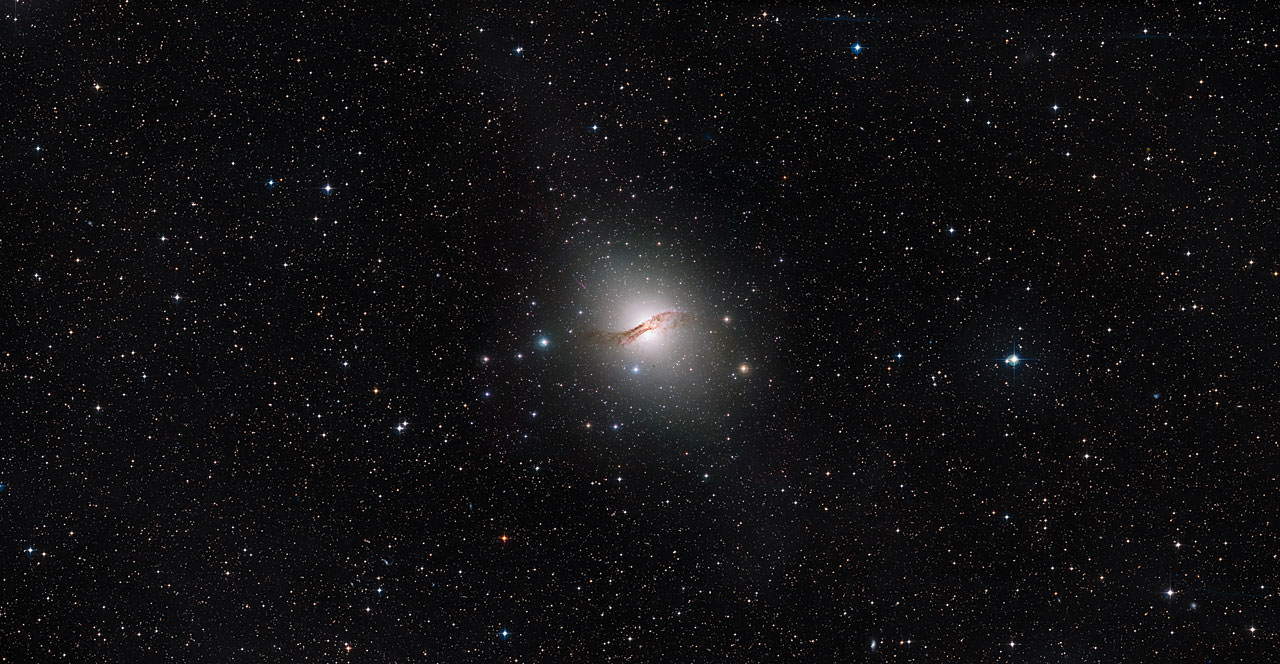
Centaurus A — that popular target for astrophotographers in the southern hemisphere — has a much wider halo than expected, astronomers revealed. Turns out the galaxy’s ghostly glow is about eight times the apparent width of the full moon in the sky. Examining this halo in more detail could reveal much about how galaxies come together, astronomers said.
It’s relatively easy for scientists to spot the halo around the Milky Way since we are a part of it, but it’s much harder to observe them in other galaxies because they are so faint. Looking at Centaurus A (10 million to 16 million light-years away) required the power of two Hubble Space Telescope instruments: the Advanced Camera for Surveys and the Wide Field Camera 3.
“Tracing this much of a galaxy’s halo gives us surprising insights into a galaxy’s formation, evolution, and composition,” stated lead author Marina Rejkuba of the European Southern Observatory in Germany. “We found more stars scattered in one direction than the other, giving the halo a lopsided shape — which we hadn’t expected.”
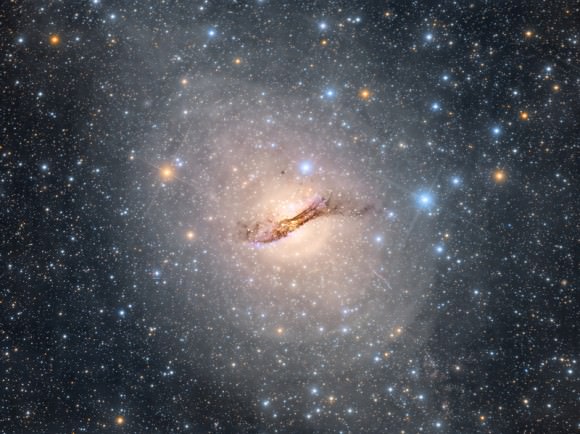
The astronomers examined a region that is about 295,000 light-years across — more than double the diameter of the Milky Way’s 120,000 light years. The stars inside the glow appeared to have abundant heavier elements, even in the fringes of the galaxy — a contrast to the much lighter hydrogen and helium that are found in the fringes of the Milky Way and nearby spiral galaxies.
It’s possible the heavier stars arose because Centaurus A merged with a spiral galaxy long ago, removing stars from the intruder and sticking in Centaurus A, the astronomers said.
“Even at these extreme distances, we still haven’t reached the edge of Centaurus A’s halo, nor have we detected the very oldest generation of stars,” stated co-author Laura Greggio of Italy’s INAF (Istituto Nzaionale de Astrofisica, or National Institute for Astrophysics).
“This aged generation is very important. The larger stars from it are responsible for manufacturing the heavy elements now found in the bulk of the galaxy’s stars. And even though the large stars are long dead, the smaller stars of the generation still live on and could tell us a great deal.”
The results are available in Astrophysical Journal Letters and in preprint version on Arxiv.
An Amazing Deep-Field View of Centaurus A
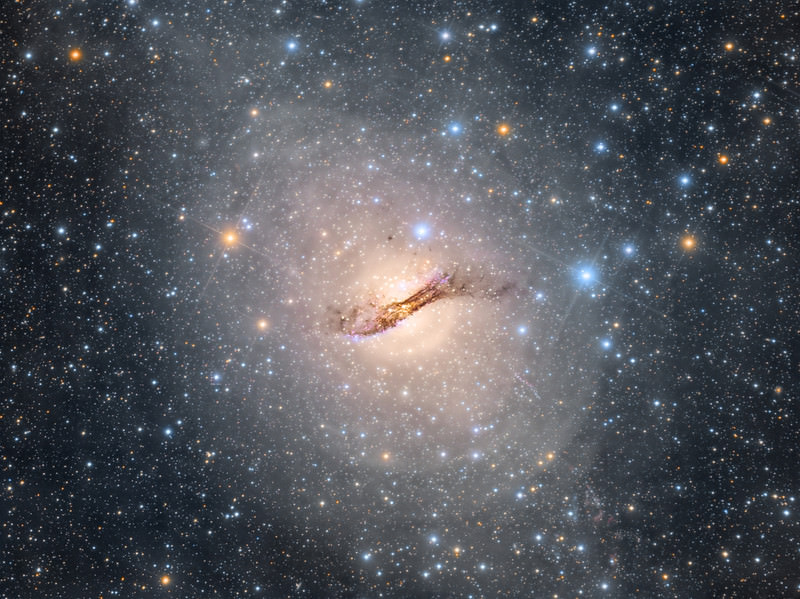
Sometimes, you just have to say “Wow!”
The view you’re looking at above is of Centaurus A (NGC 5128), a galaxy about 10-16 million light years distant in the southern hemisphere sky. It’s a favorite of astrophotographers and professional observatories alike.
But what makes this image so special is that it was taken by an amateur astrophotographer.
To construct this amazing image, New Zealand-based astrophotographer Rolf Wahl Olsen exposed the field of view for 120 hours over 43 nights spanning February to May of this year.
Rolf recently shared his motivation to construct this image;
“Over the past few months I have been on a mission to achieve a long time dream of mine: taking a deep sky image with more than 100 hours of exposure.”
Rolf also noted that the stars in the frame are visible down to magnitude +25.45, which “appears to go deeper than the recent ESO release” and believes that it may well be “the deepest view ever obtained of Centaurus A,” As well as “the deepest image ever taken with amateur equipment.”
Not only is the beauty and splendor of the galaxy revealed in this stunning mosaic, but you can see the variations in the populations of stars in the massive regions undergoing an outburst of star formation.
One can also see the numerous globular clusters flocking around the galaxy, as well as the optical counterparts to the radio lobes and the faint trace of the relativistic jets. The extended halo of the outer shell of stars is also visible, along with numerous foreground stars visible in the star rich region of Centaurus.
Finally, we see the dusty lane bisecting the core of this massive galaxy as seen from our Earthly vantage point.
To our knowledge, many of these features have never been captured visually by backyard observers before, much less imaged. Congrats to Rolf Wahl Olsen on a spectacular capture and sharing his view of the universe with us!
Read more on the Centaurus A deep field on Google+.
-Check out the comparison images of the Centaurus A deep field showing the relativistic jet (!) background galaxies and clusters.
-Explore more of Rolf’s outstanding work at his website.
New Image Shows Beautiful Violence in Centaurus A
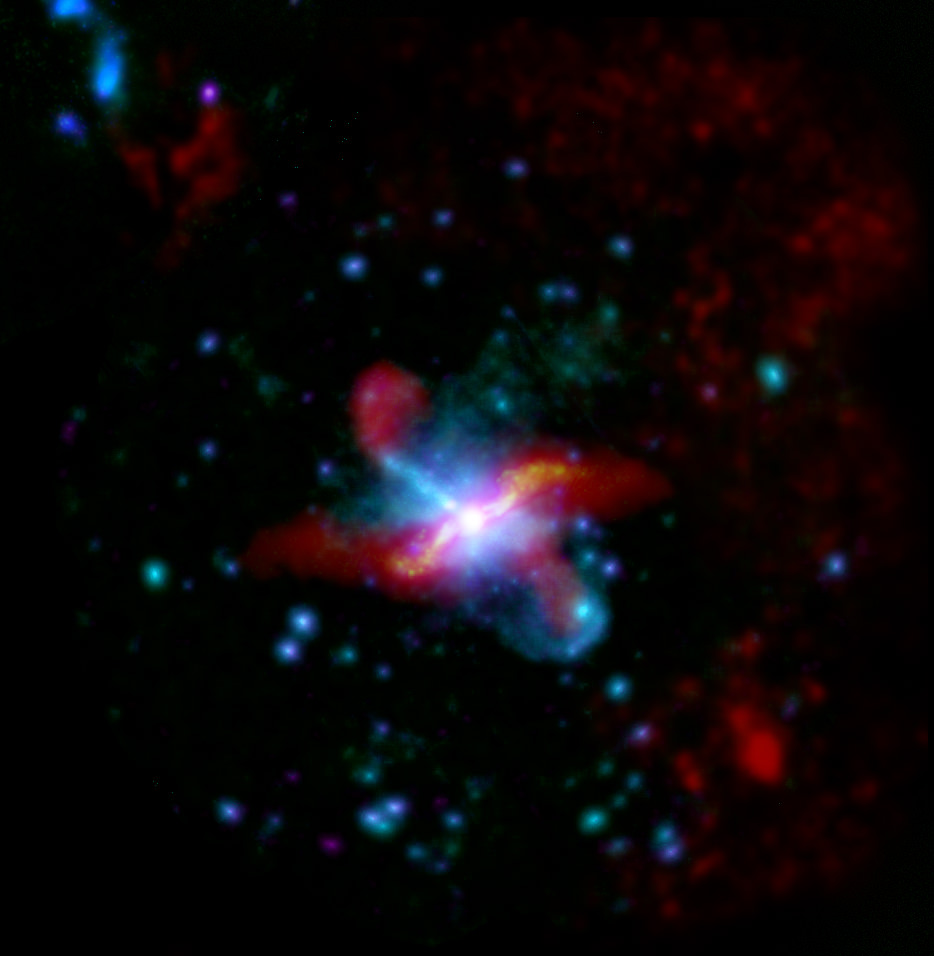
[/caption]
The mysterious galaxy Centaurus A is a great place to study the extreme processes that occur near super-massive black holes, scientists say, and this beautiful new image from the combined forces of the Herschel Space Observatory and the XMM-Newton x-ray satellite reveals energetic processes going on deep in the galaxy’s core. This beautiful image tells a tale of past violence that occurred here.
The twisted disc of dust near the galaxy’s heart shows strong evidence that Centaurus A underwent a cosmic collision with another galaxy in the distant past. The colliding galaxy was ripped apart to form the warped disc, and the formation of young stars heats the dust to cause the infrared glow.
This multi-wavelength view of Centaurus A shows two massive jets of material streaming from a immense black hole in the center. When observed by radio telescopes, the jets stretch for up to a million light years, though the Herschel and XMM-Newton results focus on the inner regions.
At a distance of around 12 million light years from Earth, Centaurus A is the closest large elliptical galaxy to our own Milky Way.
“Centaurus A is the closest example of a galaxy to us with massive jets from its central black hole,” said Christine Wilson of McMaster University, Canada, who is leading the study of Centaurus A with Herschel. “Observations with Herschel, XMM-Newton and telescopes at many other wavelengths allow us to study their effects on the galaxy and its surroundings.”
Find more information on this image at ESA’s website.
Hubble’s Stunning New View of Centaurus A
[/caption]
From a HubbleSite press release:
Resembling looming rain clouds on a stormy day, dark lanes of dust crisscross the giant elliptical galaxy Centaurus A. Hubble’s panchromatic vision, stretching from ultraviolet through near-infrared wavelengths, reveals the vibrant glow of young, blue star clusters and a glimpse into regions normally obscured by the dust.
The warped shape of Centaurus A’s disk of gas and dust is evidence for a past collision and merger with another galaxy. The resulting shockwaves cause hydrogen gas clouds to compress, triggering a firestorm of new star formation. These are visible in the red patches in this Hubble close-up.
At a distance of just over 11 million light-years, Centaurus A contains the closest active galactic nucleus to Earth. The center is home for a supermassive black hole that ejects jets of high-speed gas into space, but neither the supermassive or the jets are visible in this image.
This image was taken in July 2010 with Hubble’s Wide Field Camera 3.



